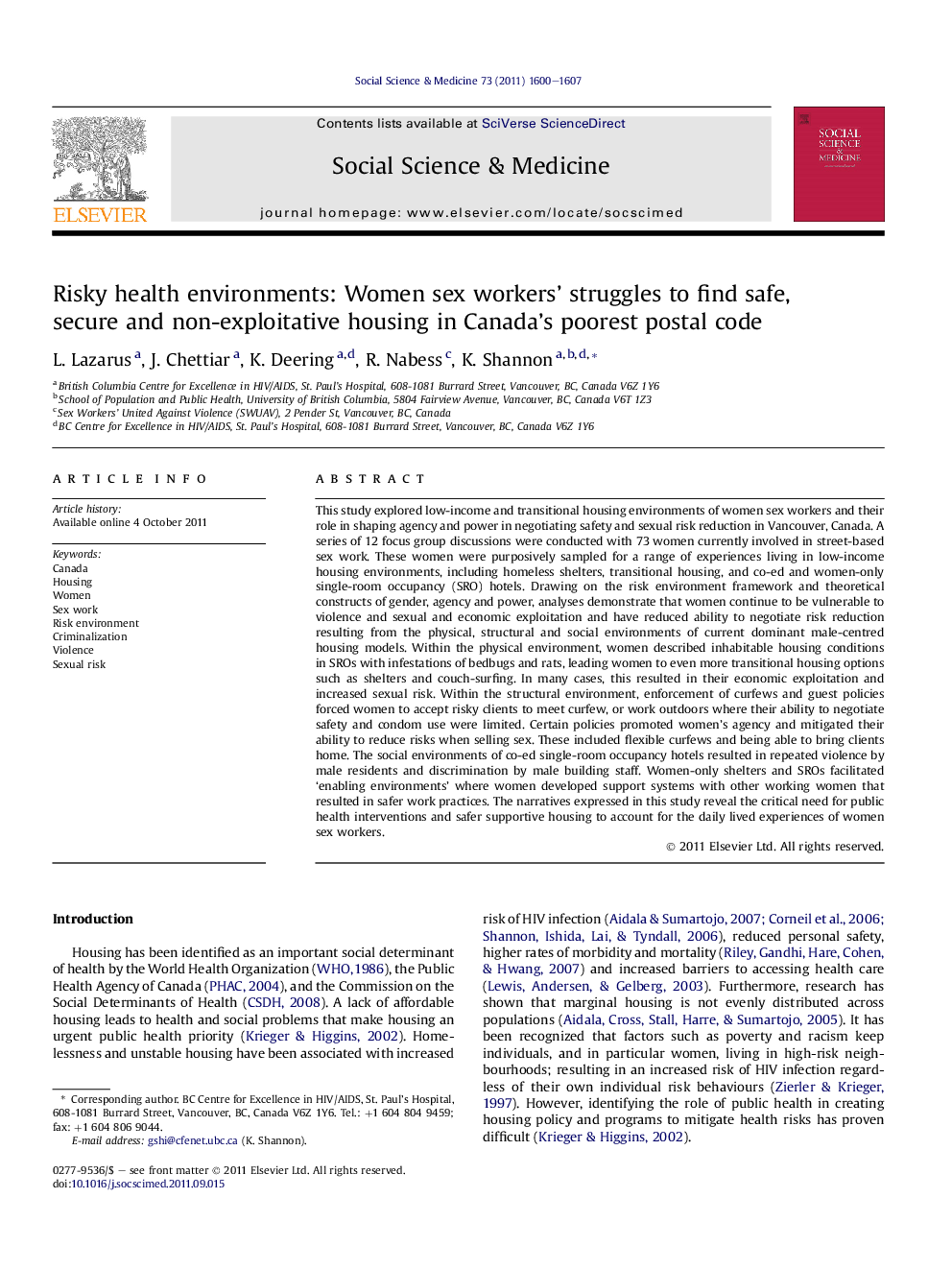| کد مقاله | کد نشریه | سال انتشار | مقاله انگلیسی | نسخه تمام متن |
|---|---|---|---|---|
| 952694 | 927533 | 2011 | 8 صفحه PDF | دانلود رایگان |

This study explored low-income and transitional housing environments of women sex workers and their role in shaping agency and power in negotiating safety and sexual risk reduction in Vancouver, Canada. A series of 12 focus group discussions were conducted with 73 women currently involved in street-based sex work. These women were purposively sampled for a range of experiences living in low-income housing environments, including homeless shelters, transitional housing, and co-ed and women-only single-room occupancy (SRO) hotels. Drawing on the risk environment framework and theoretical constructs of gender, agency and power, analyses demonstrate that women continue to be vulnerable to violence and sexual and economic exploitation and have reduced ability to negotiate risk reduction resulting from the physical, structural and social environments of current dominant male-centred housing models. Within the physical environment, women described inhabitable housing conditions in SROs with infestations of bedbugs and rats, leading women to even more transitional housing options such as shelters and couch-surfing. In many cases, this resulted in their economic exploitation and increased sexual risk. Within the structural environment, enforcement of curfews and guest policies forced women to accept risky clients to meet curfew, or work outdoors where their ability to negotiate safety and condom use were limited. Certain policies promoted women’s agency and mitigated their ability to reduce risks when selling sex. These included flexible curfews and being able to bring clients home. The social environments of co-ed single-room occupancy hotels resulted in repeated violence by male residents and discrimination by male building staff. Women-only shelters and SROs facilitated ‘enabling environments’ where women developed support systems with other working women that resulted in safer work practices. The narratives expressed in this study reveal the critical need for public health interventions and safer supportive housing to account for the daily lived experiences of women sex workers.
► Explores transitional housing environments of street-based sex workers and role in shaping agency and power in negotiation of sexual risk.
► Analyses draws on women’s narratives in elucidating the physical, structural and social environments of housing in shaping risk negotiation.
► Results reveal violence, sexual, and economic exploitation produced by the gender risk environments of dominant male-centred housing models.
► The study supports critical need for safer supportive housing models that account for the daily lived experiences of sex workers.
Journal: Social Science & Medicine - Volume 73, Issue 11, December 2011, Pages 1600–1607